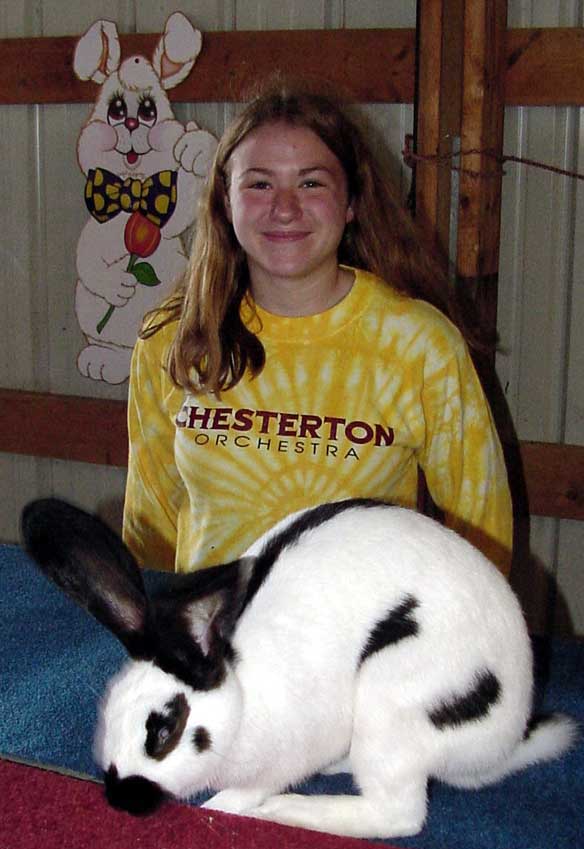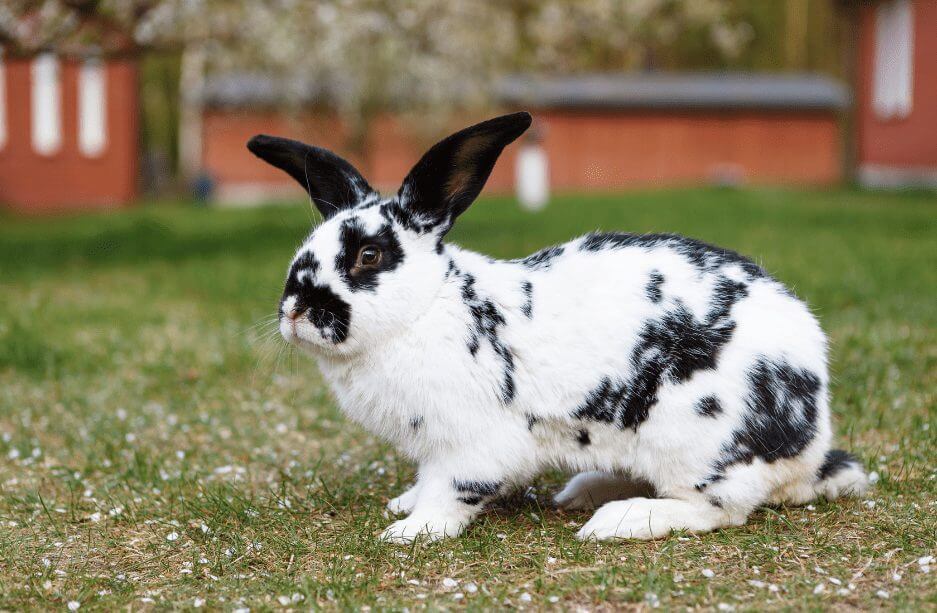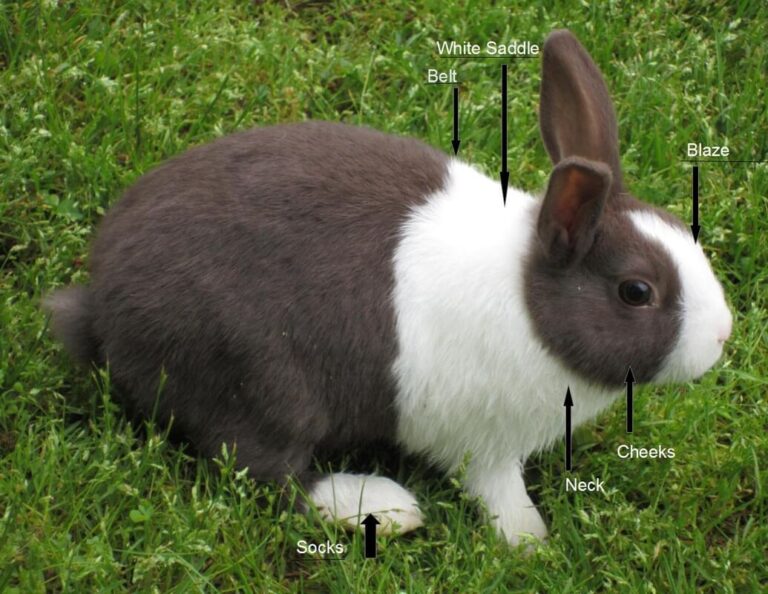Caring for Checkered Giant Rabbits Breed: A Guide to Responsible Ownership
Owning a Checkered Giant Rabbit is a rewarding experience, but it comes with its own set of considerations and responsibilities. These magnificent creatures are known for their impressive size, distinctive markings, and gentle temperament. In this guide, we’ll delve into the care requirements and unique characteristics of Checkered Giants, covering aspects such as size, temperament, health considerations, lifespan, dietary needs, family compatibility, and trainability.
Contents
Checkered Giant Rabbit Breed
- COMMON NAME: Checkered Giant Rabbit
- SCIENTIFIC NAME: Oryctolagus cuniculus (like all domestic rabbits)
- ADULT SIZE: Giant breed
- Weighing: 14-16 lbs (6.4-7.3 kg) – They are one of the largest recognized rabbit breeds
- LIFESPAN: 5-8 years
Checkered Giant Rabbits Size

Checkered Giants are true to their name, being one of the largest rabbit breeds. They can weigh up to 12 pounds or more, making them a substantial presence in any home. Their size necessitates ample space for comfortable movement and exercise.
Temperament
Despite their imposing stature, Checkered Giants are gentle and friendly animals. While they may not be as overtly affectionate as some smaller breeds, they form strong bonds with their owners and enjoy spending time with them. Their temperament makes them suitable companions for individuals, couples, and families alike.
Health Considerations
Like all rabbits, Checkered Giants are susceptible to certain health issues. While they don’t have specific breed-related ailments, they can experience conditions such as gastrointestinal stasis, ear mites, and dental problems. Regular veterinary check-ups are crucial for monitoring their health and addressing any issues promptly.
Lifespan
With proper care, Checkered Giants can live for 5 to 8 years or even longer. This longevity underscores the importance of committing to their care for the entirety of their lives.
Care Requirements

Caring for a Checkered Giant Rabbit involves providing adequate space, a balanced diet, and regular grooming. Here’s what you need to know:
- Housing: Due to their large size, Checkered Giants need a spacious living area. A large rabbit hutch or a secure, rabbit-proofed room is ideal. Outdoor enclosures should be predator-proof and provide shelter from the elements.
- Diet: A healthy diet for a Checkered Giant includes a mix of high-quality hay (such as timothy or alfalfa), fresh vegetables, and a small amount of rabbit pellets. Fresh water should always be available.
- Grooming: Regular grooming is essential to prevent matting and reduce shedding. Checkered Giants have short coats, so weekly brushing is usually sufficient. Additionally, their nails should be trimmed regularly.
- Health Care: Regular veterinary check-ups are crucial to monitor for common health issues such as dental problems, obesity, and gastrointestinal stasis. Vaccinations and parasite control should also be part of their health regimen.
Dietary Needs
A balanced diet is essential for maintaining Checkered Giants’ health and well-being. Their diet should primarily consist of hay, supplemented with high-quality pellets and fresh vegetables. Adequate hydration is also vital, with fresh water available at all times.
Family Compatibility
Checkered Giants can make wonderful family pets, provided that all members understand and respect their needs. Their gentle nature makes them suitable for households with older children who can handle their size responsibly. Proper supervision and interaction are key to ensuring harmonious coexistence between rabbits and family members.
Related: English Lop Rabbit Breed
Trainability
While Checkered Giants may not be as trainable as some smaller breeds, they are intelligent animals capable of learning basic behaviors and commands. With patience and positive reinforcement, they can be taught to use a litter tray and respond to their names. Consistent training and socialization are essential for nurturing their abilities and fostering a strong bond with their owners.
Conclusion
In conclusion, owning a Checkered Giant Rabbit is a fulfilling endeavor that requires commitment, patience, and understanding. By providing them with proper care, attention, and a nurturing environment, you can enjoy the companionship of these magnificent creatures for many years to come.
Related: Polish Rabbit
FAQs About Checkered Giant Rabbits
Q: How big do Checkered Giant Rabbits get?
A: Checkered Giant Rabbits are one of the largest rabbit breeds, weighing up to 12 pounds or more.
Q: What is the temperament of Checkered Giant Rabbits?
A: Checkered Giants are known for their gentle and friendly demeanor, though they may not be as outwardly affectionate as smaller breeds.
Q: What are the health considerations for Checkered Giant Rabbits?
A: While they don’t have specific breed-related health issues, Checkered Giants can be prone to gastrointestinal stasis, ear mites, and dental problems. Regular veterinary check-ups are important for maintaining their health.
Q: How long do Checkered Giant Rabbits live?
A: With proper care, Checkered Giants can live for 5 to 8 years or even longer.
Q: What should I feed my Checkered Giant Rabbit?
A: Checkered Giants’ balanced diet consists primarily of hay, supplemented with high-quality pellets and fresh vegetables. Fresh water should always be available.
Q: Are Checkered Giant Rabbits suitable for families?
A: Yes, Checkered Giants can make excellent family pets, especially in homes with older children who understand and respect their needs.
Q: Can Checkered Giant Rabbits be trained?
A: While they may not be as trainable as some smaller breeds, Checkered Giants are intelligent animals capable of learning basic behaviors and commands with patience and positive reinforcement.
- Golden Retriever Pros and Cons: What Every Pet Parent Should Know - 15 September 2025
- Cane Corso Dog Breed: Health, Care, and Lifespan - 14 September 2025
- Catahoula Leopard Dogs: Description, Temperament, Lifespan, & Facts - 21 July 2025







